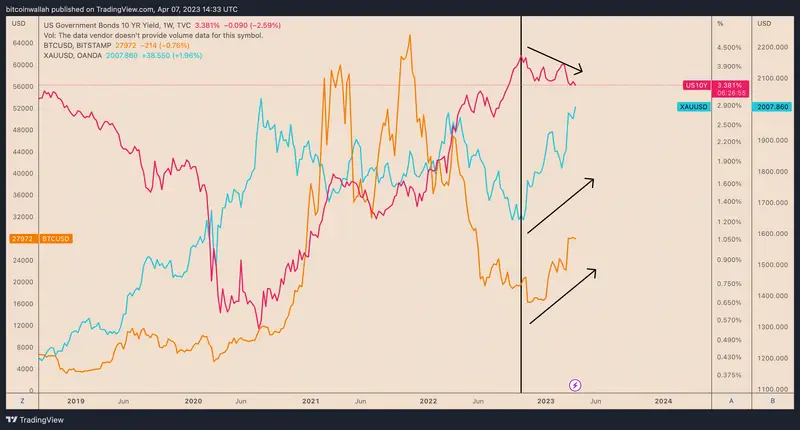Historical Bitcoin price fractal hints at rally toward $50K
Bitcoin (BTC) could rally toward $50,000 in 2023, according to a historical price fractal highlighted by popular market analyst Mags.
Bitcoin price trend in 2015 vs. 2023
The chart fractal highlights the similarities between Bitcoin’s ongoing price trends and those recorded after the completion of the 2013–2015 bear market.
That includes Bitcoin’s consolidation inside the $200–$300 range between January 2015 and August 2015, which appears identical to its consolidation between the $18,500–$25,000 range after the supposed completion of its 2021–2022 bear market.

BTC’s price broke above the $16,000–$25,000 range in March 2023, prompting Mags to highlight its resemblance to the breakout above the $200–$300 range in October 2015.
Since this resulted in a rally toward $700 in June 2016, the analyst sees the scenario potentially repeating in 2023, with BTC’s price doubling to $50,000.
“Being bearish here [when Bitcoin’s price is around $28,000] is like being bearish at $350,” Mags added.
Liquidity crunch may spoil Bitcoin price rally
The bullish argument for Bitcoin comes amid anticipations that the United States Federal Reserve would slow the pace of its interest rate hikes.
Due to lower rate expectations, the yield on the benchmark U.S. 10-year Treasury note has declined. That, in turn, has boosted investors’ appetite for zero-yielding assets, such as Bitcoin and gold.

In addition, lower yields have also sapped U.S. Dollar demand, with the Dollar losing 1.33% in 2023 versus a basket of top foreign currencies. Since Bitcoin’s value is largely denominated in the dollar, it means higher prices for BTC/USD.
Related: Latest Bitcoin price data suggests double top above $200K in 2025
However, Bloomberg analyst Mike McGlone has cautioned about a potential bull trap in the Bitcoin market due to a mounting liquidity crunch.
He said:
“It may be illogical to expect the stock market, crude oil, copper, and the Bloomberg Galaxy Crypto Index (BGCI) sustain the recent bounces with year-over-year measures of money supply and commercial bank deposits falling around 2%.”
This article does not contain investment advice or recommendations. Every investment and trading move involves risk, and readers should conduct their own research when making a decision.
Comments
Post a Comment